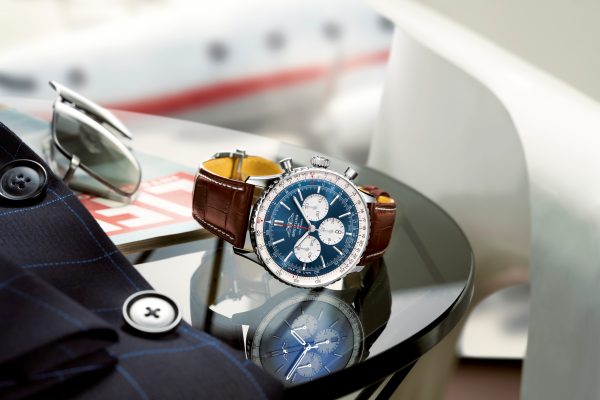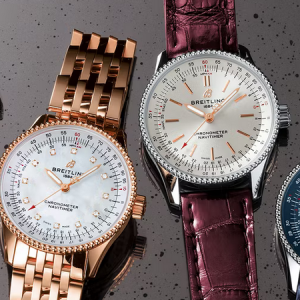Depending on the demands of the wearer, each company has its image of what a pilot’s watch should be. However, a few distinguishing features set these watches apart from the rest.
Good Readability

When flying, pilot watches should be large enough to read. The dials were also as contrasting and brilliant as feasible for reading. For example, the index should be a matte black dial with large numerals and markers; all painted in radioactive material.
Orientation triangle

The 12 o’clock triangular index, a luminous equilateral upright triangle with two dots on either side, enables a pilot to quickly figure out the 12 o’clock indication in relation to the upright orientation of the dial, and so read the time at a glance, both during the day and at night.
Flyback Chronograph

Flyback chronographs (also known as retour-en-vol in French) can be reset to zero and resumed instantaneously, which pilots appreciate since it saves time recording many elapsed periods in a row. Instead of the typical stop-reset-start sequence, which requires three operations, the Flyback completes all three stages with just one stroke of the reset push-button.
Onion Crown

Pilots flew in cold cockpits in the early days of flying. They wore thick gloves to protect their hands from freezing because they were exposed to extreme cold. A large crown was necessary for easy operation of the watch, even with gloved hands. This is why most pilot’s timepieces have enormous crowns with recurrent onion forms.
Anti-magnetic Materials
When exposed to magnetic fields, mechanical timepieces are at risk. All-purpose tool watches, but especially pilot’s watches, require protection against this negative impact, as a cockpit is one of the most magnetic situations a watch may meet. Modern pilot’s watches are becoming less and less fitted with such hefty, space-consuming cages as anti-magnetic materials become more common. Magnetic fields are automatically shielded by their moving components, which are made of silicon or magnetic alloys.
Slide Rule Bezel

The slide rule bezel, created by Breitling for their Chronomat watch, is a mechanical calculator for pilots, a sort of pre-digital mini-computer that enables all forms of in-flight computations. It is based on a dial with a fixed scale and a bidirectional bezel with a second, movable scale. Breitling uses a spinning bezel and a logarithmic scale to calculate fuel consumption, speed, distance, flight time, and unit conversions.
GMT Indication

This is a non-military feature frequently found on pilots’ timepieces. Anyone travelling across time zones, particularly pilots, would appreciate the ability to see numerous time zones. The GMT or second time zone is shown by an extra hour hand that rotates on a 24-hour scale and may be read on the two-tone bezel that shows day and night.





